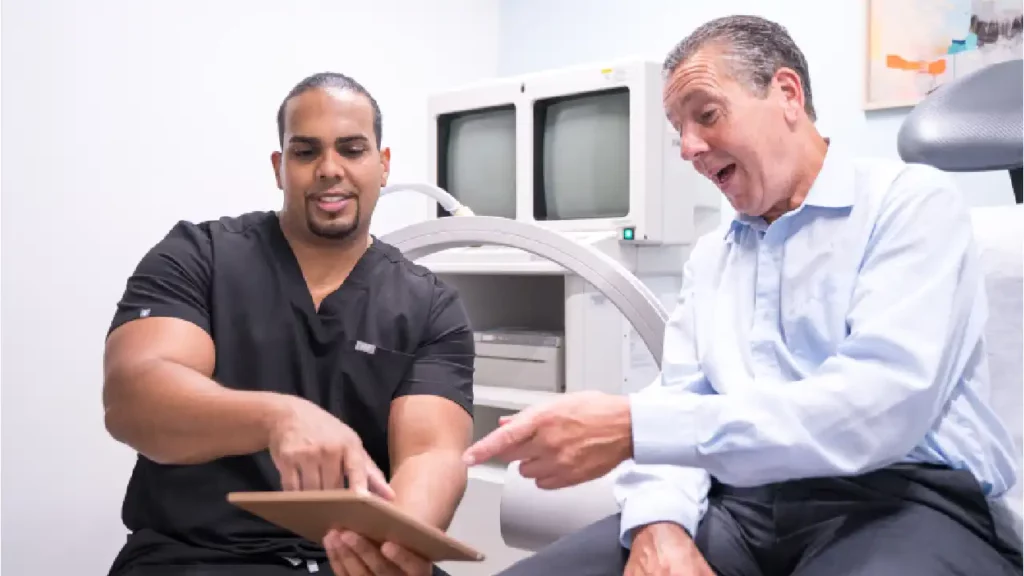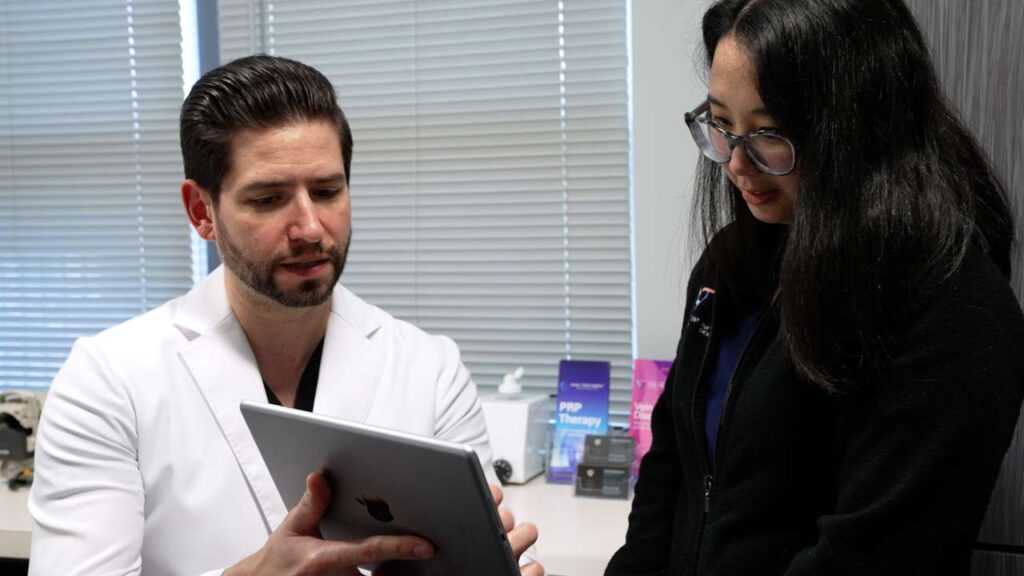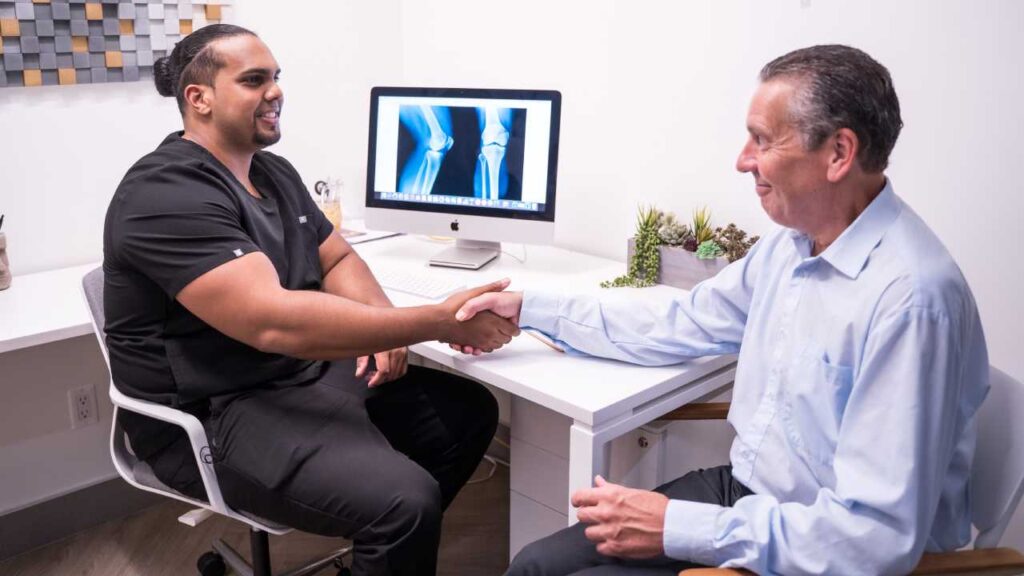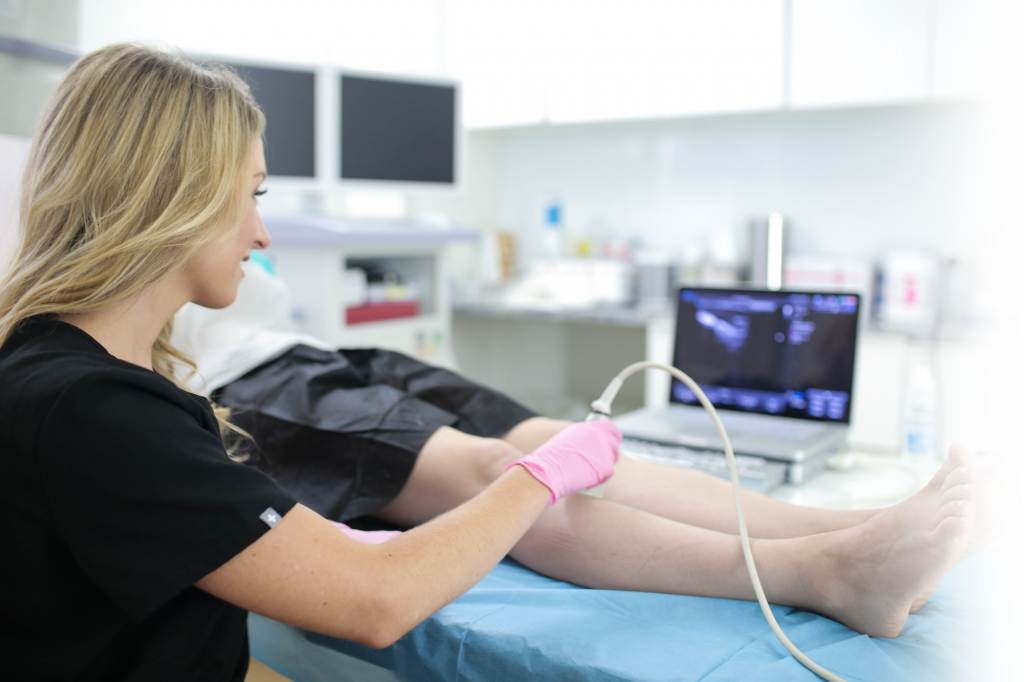1. For Chronic Venous Insufficiency (Photos), See a Doctor
Step one for patients with chronic venous insufficiency (CVI) is to see a vein doctor promptly. The sooner you address this vein disease, the easier it is to manage, and the fewer complications will arise. If you aren’t sure if you have CVI, take a look at these Chronic Venous Insufficiency photos, or compare your symptoms against these: spider veins, varicose veins, leg heaviness, leg cramps, leg swelling, restlessness in the legs, venous ulcerations, hyperpigmentation, leathery or flaky skin, or venous stasis dermatitis. CVI will not reverse on its own since it’s a progressive condition that involves valve failure within your veins. Click HERE to reverse Chronic Venous Insufficiency today at our award-winning New Jersey vein center.
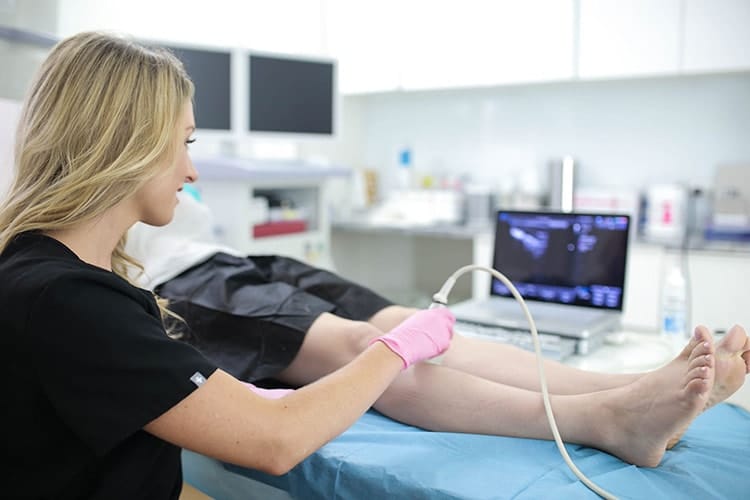
2. See What Kind of Doctor Treats Chronic Venous Insufficiency
It’s important to note that there are various kinds of vein centers, but many don’t treat Chronic Venous Insufficiency. Dermatologists, cosmetic surgeons, and beauty spas typically treat small spider veins on the face or broken capillaries in legs with topical lasers. But Chronic Venous Insufficiency stems from valve failure in deeper leg veins and often involves issues like blood clots or deep vein thrombosis.
Treating spider veins or varicose veins with surface lasers, if they stem from venous insufficiency, is a temporary solution, at best. It’s imperative to treat the underlying disease to fully eradicate vein damage. Without that, defective veins will continue to form. See a board certified vein doctor who studied venous medicine to make sure your surface veins, as well as the causative disease, are both addressed.
3. Know Difference Between Collapsed Vein, Burst Vein & CVI
A varicose vein or spider vein is not a collapsed vein or a burst vein. A collapsed vein occurs when a vein has been subjected to numerous injections, as with illicit drug injections or diseases that require frequent venous needle insertions. This is an undesired outcome of injections. In contrast, CVI is treated by intentionally collapsing a malfunctioning vein, so that blood flows into healthy veins. In this instance, it’s a solution, not a problem.
A burst vein is one that ruptures from injury, illness, or improper medical care. Spider veins and varicose veins are not burst veins, but veins that expand or form under excess pressure. Knowing the difference between these terms will help you choose the right vein doctor and reverse venous insufficiency promptly. Burst vein, CVI, and collapsed vein treatment are different and require specific expertise.
Our team of NJ vein specialists knows how to treat a collapsed vein, and also how to administer every common femoral vein reflux treatment and saphenous vein reflux treatment. If you suspect a burst vein or ruptured artery, however, head to the emergency room first to make sure bleeding is controlled promptly.
4. Don’t Ignore Varicose Veins, Edema, or Venous Stasis
Some patients try to ignore things like spider veins, varicose veins, leg swelling, or flaky skin (venous stasis dermatitis), assuming the problem is merely cosmetic. People often think that treating these symptoms is a matter of vanity, and that treatment won’t be covered by insurance. In reality, these issues are often caused by Chronic Venous Insufficiency and they are clear indicators that your circulation is compromised. The quickest way to reverse CVI is to pay attention and take it seriously.
Insurance companies recognize the serious nature of vein disease and routinely cover procedures like sclerotherapy for veins. While some veins won’t require treatment, and eliminating them is optional, others are caused by blood clots, broken valves, weakened vein walls, and issues that pose a serious risk to you. Don’t ignore clues like varicose veins, edema, or venous stasis. Treatment is simple and affordable, and avoiding the vein doctor could be a costly mistake.
5. Make Lifestyle Adjustments for Varicose Veins in Stage 1
As soon as you notice a spider vein or varicose vein, insufficiency should be considered. The beginning stages of varicose veins include enlarged, bulging, twisted veins at the surface of your skin, as well as sensations like pinching, cramping, aching, or heaviness in the legs. But some patients have no symptoms at all, so if varicose veins or vein disease run in your family, see a New Jersey vein specialist for proactive care. Make lifestyle changes right away to prevent the development of more varicose veins and the worsening of venous insufficiency. While these steps won’t repair the existing vein damage, they can help with symptoms and slow the progression of the disease.
- Wear compression stockings if your vein doctor advises them.
- Limit salt intake to manage blood pressure.
- Wear comfortable shoes that don’t restrict circulation.
- Increase activity so blood doesn’t pool in the legs.
- Elevate your legs and avoid crossing them for long periods.
- Change positions often, rather than sitting or standing for too long.
- Maintain a healthy weight to decrease the burden on the veins.
- Clean and moisturize skin suffering from venous stasis.
6. Reduce Your Risk of a Varicose Vein or Insufficiency
Understanding your risk of developing a varicose vein or insufficiency can help you be proactive about it. Chronic Venous Insufficiency is very common, affecting up to 20% of men and 40% of women. Many don’t realize they have it until they’re dealing with severe symptoms. Here are some risk factors that elevate the likelihood of you developing vein damage or vein disease. Knowing your risks should encourage you to implement the lifestyle adjustments listed above and visit a vein doctor proactively, to prevent a severe case of vein disease.
- Women are more likely than men to have vein issues.
- Hormone shifts (pregnancy, menopause, birth control) elevate risk.
- Aging weakens vein valves and increases CVI risk.
- Sedentary lifestyles contribute to CVI.
- Obesity increases risk of vein damage and vein disease.
- Family history of vein disease increases risk to 90%.
- Stationary jobs (drivers, desk jobs) increase likelihood.
7. Choose Minimally Invasive Care for Venous Insufficiency
For most patients, the best way to improve blood flow and heal a damaged blood vessel, whether it’s a varicose vein, spider vein, or broken valve, is to pursue minimally invasive procedures. These innovative vein treatments reverse venous insufficiency and vein damage within minutes, which can’t be done by steps you take at home. Less invasive procedures reduce the risks, expense, and hassles associated with vein surgery and allow patients to resume their regular activities immediately.
If you suspect you have venous insufficiency, visit our Harvard-trained vein doctors for a diagnosis. Our minimally invasive procedures for Chronic Venous Insufficiency include sclerotherapy (Varithena and ClariVein), radiofrequency ablation (VNUS Closure and ClosureFast), vein adhesives (VenaSeal), and custom combinations designed to suit your individual medical history. We reverse venous insufficiency and erase unsightly veins in under 30 minutes at our accredited vein center in New Jersey.
